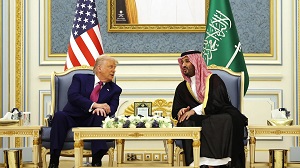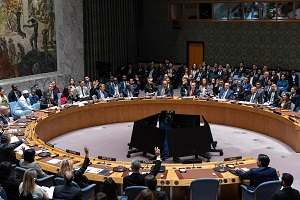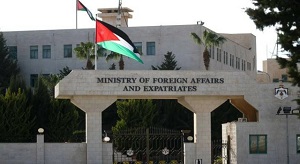Middle East growth strengthens while half workforce left behind - By Raad Mahmoud Al-Tal, The Jordan Times
The latest World Bank economic report on the Middle East, North Africa, Afghanistan, and Pakistan presents a cautiously optimistic outlook for growth over the next two years. Despite global uncertainty stemming from shifting trade patterns, ongoing geopolitical tensions, and rising financing costs, the region is expected to grow by an average of 2.8 per cent in 2025 and 3.3 percent in 2026. These figures reflect improving performance in several regional economies, even as political, economic, and security challenges continue to limit the pace of recovery in others.
This improvement comes at a time when global economic conditions are far from stable. World trade has slowed, supply chains are being reorganised, and geopolitical risks have intensified across multiple fronts. At the same time, tight monetary conditions in major economies have raised borrowing costs worldwide. In such an environment, achieving positive and rising growth rates across much of the Middle East signals the region’s capacity to adapt and respond to changing global dynamics.
The Gulf Cooperation Council (GCC) countries continue to drive the region’s improved performance. They are benefiting from a gradual and voluntary easing of oil production cuts, allowing output to recover without destabilizing global prices. At the same time, strong expansion in non-oil sectors supported by broad diversification programs spanning trade, industry, logistics, and tourism has helped rebalance growth engines. This strategic shift reduces dependence on volatile energy markets and strengthens fiscal resilience, enabling governments to continue investing in long-term structural transformation.
Meanwhile, oil-importing countries are also projected to perform better, with growth supported by increased public spending and higher private investment. Agriculture and tourism are emerging as key drivers, especially in North African economies that have enjoyed a rebound in agricultural production following periods of drought and strong recovery in tourism activity after the pandemic. These developments are contributing to improved employment prospects and rising household incomes, though progress remains uneven across countries.
In contrast, developing oil-exporting economies in the region face more difficult circumstances. Ongoing conflicts, political uncertainty, and declining oil production in several cases are undermining their ability to capitalise on improvements in global trade or energy prices. Weak investor confidence and persistent instability are weighing heavily on output, government revenues, and job creation.
The report, titled "Jobs and Women: Untapped Talent and Unfulfilled Growth", highlights a critical structural challenge for the region: the exceptionally low participation of women in the labor market. Despite significant progress in education and skill development, only one in five women in the region is currently active in the workforce the lowest rate globally. This gap represents a profound disconnect between the region’s human capital potential and its economic reality.
The World Bank argues that increasing women’s economic participation could deliver substantial economic gains. Removing social, legal, and institutional barriers that restrict women’s entry into the labor market could raise GDP per capita by 20 to 30 percent in economies such as Jordan, Egypt, and Pakistan. Such figures underscore that growth in the Middle East is not only tied to oil output or large-scale investment programs but also depends on how effectively economies utilise their human capital.
The analysis further notes that the region possesses a well-educated and under-utilised pool of female talent. Empowering the private sector to create more jobs, modernising regulatory frameworks, and improving the overall business environment are essential steps for unlocking women’s potential. In a world facing fierce economic competition, any country that sidelines half of its population risks undermining its long-term growth prospects.
The future of the region’s economies will not be determined solely by oil markets, investment flows, or geopolitical developments. It will depend equally on the ability of governments and societies to dismantle the deep-rooted structural barriers that limit women’s full participation in economic life. Sustainable and inclusive growth is only achievable when all members of society men and women alike are able to contribute to and benefit from economic progress.
Raad Mahmoud Al-Tal - Department of Economics — The University of Jordan
Latest News
-
 Spain PM announces $710 million in military aid for Ukraine
Spain PM announces $710 million in military aid for Ukraine
-
 Prime minister reiterates centrality for Palestinian cause for Jordan
Prime minister reiterates centrality for Palestinian cause for Jordan
-
 Trump to meet Saudi Crown Prince on Tuesday
Trump to meet Saudi Crown Prince on Tuesday
-
 UN Security Council adopts US resolution on Gaza peace plan
UN Security Council adopts US resolution on Gaza peace plan
-
 Jordan condemns Israeli minister’s calls to target Palestinian leadership
Jordan condemns Israeli minister’s calls to target Palestinian leadership